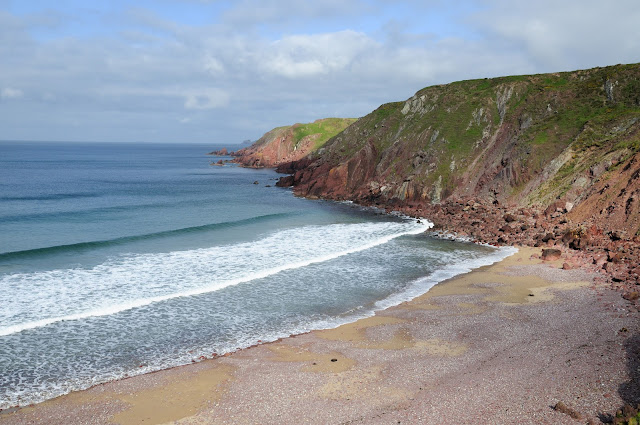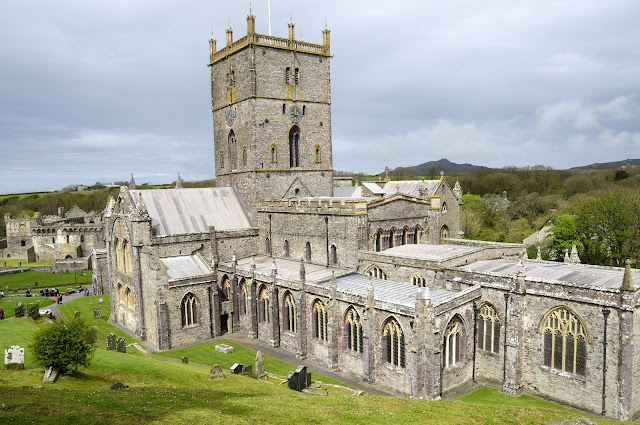On our wander around Chester, not only the buildings were interesting, but also the people. Suddenly spotted this elderly lady with her elderly camera, standing in front to me, photographing something. Just had to take a picture of her! We had a conversation for a few minutes, and it turned out that she had several other old cameras in a carrier back in her hand!
The Old Photographer
A bronze sculpture of a Elephant, unveiled on Tuesday 16th March 2010 opposite the Town Hall. It is called Janya, and is a baby Indian Asian calf. It was donated by Chester zoo. Next we moved onto Chester Cathedral.
The C7th Mercian King, Wulfhere, is reputed to have founded a timber church on this site dedicated to St Peter and St Paul, but it was his daughter, Werburgh, who really put Chester on the map. She renounced her royal status to become a nun at Ely Abbey. Many miracles were attributed to her during her lifetime, including restoring back to life a goose that had been stolen and eaten.
She was buried in Staffordshire and her tomb rapidly became a place of pilgrimage. Following the threat of Danish raids in the C9th her relics were brought to Chester as a place of safety and were placed in the Church of St Peter and St Paul. Queen Ethelfleda, the grand daughter of Alfred the Great, founded a monastery in Chester and rededicated the church to St Werburgh. The new monastery continued to enjoy royal patronage and flourished. A splendid shrine was built in her honour.
The Water of Life
I loved this statue in the Cathedral cloisters. The piece was designed for the Cloister Garden of Chester Cathedral in association with the 900th Anniversary celebrations of the foundation of the Benedictine Abbey of St Werburgh, on this site in 1092.
The water feature depicts (if you know the story) "the encounter between Jesus and the Woman of Samaria, showing their shared bowl overflowing with water. The theme of water also suggests a link to how the Benedictine monks water supply was at the centre of the cloister garden."
Looking toward the great west window in Chester cathedral. It is Perpendicular Gothic with 20th-century stained glass by W. T. Carter Shapland (1961) as the Victorian stained glass was blown out by a bomb in 1941.The picture shows the massive space inside this building.
And facing the other way toward the altar
The Gothic Chapter House
Chester was the last English city to fall to the Normans in 1069. To bring the area firmly under Norman control, William I appointed his nephew, Hugh d’Avranches, as Earl of Chester. He built Chester Castle and transformed the Saxon Church into a large and well endowed Benedictine Monastery, with a Norman church around the shrine of St Werburgh. Building began at the east end where the monks held services and gradually extended west. Work began on the domestic buildings including the cloisters.
Elephant and castle bench ends - note the feet of a horse, demonstrating that the carver had learnt of elephants by word of mouth.
During the Commonwealth, the Puritans smashed all the stained glass and replaced with plain glass. The hands of the Greene monument (above) in the nave were removed because they were joined in prayer, which was regarded as a popish gesture.
The space beneath the south west tower was set up as the Consistory court in 1636. The court dealt with all the legal work of the diocese, including handling wills and probate, issues of matrimony as well as heresy, blasphemy and slander. This is the only surviving court in England. The judge, called the Chancellor, sat at the canopied seat at the head of the table, with a clerk on either side. The other officers of the court sat round the table. The Apparitor was responsible for the smooth running of the court and sat in the high seat in the corner, where he could see everything going on.
Part of the Cloisters
A view of the Shropshire Union Canal from the City walls.
The Shropshire Union Canal, nicknamed the "Shroppie" is a navigable canal in England. The Llangollen and Montgomery canals are the modern names of branches of the Shropshire Union system and lie partially in Wales.
The canal lies in the counties of Staffordshire, Shropshire and Cheshire in the north-west English Midlands. It links the canal system of the West Midlands, at Wolverhampton, with the River Mersey and Manchester Ship Canal at Ellesmere Port, Cheshire, 66 miles (106 km) distant. It runs southeast from Ellesmere Port on the River Mersey to the Staffordshire and Worcestershire Canal at Autherley Junction in Wolverhampton.
The canal was the last trunk narrow canal route to be built in England. It was not completed until 1835 and was the last major civil engineering accomplishment of Thomas Telford.
Chester Castle with some history, courtesy of English heritage.
Chester Castle was founded by William the Conqueror in 1070 and became the administrative centre of the earldom of Chester. The first earth and timber ‘motte-and-bailey’ castle probably only occupied the area of the inner bailey. In the 12th century it was rebuilt in stone and the outer bailey added.
I wondered what this meant so turned to Wikipedia and learnt `A motte-and-bailey castle is a fortification with a wooden or stone keep situated on a raised earthwork called a motte, accompanied by an enclosed courtyard, or bailey, surrounded by a protective ditch and palisade. Relatively easy to build with unskilled, often forced, labour, but still militarily formidable, these castles were built across northern Europe from the 10th century onwards, spreading from Normandy and Anjou in France, into the Holy Roman Empire in the 11th century. The Normans introduced the design into England and Wales following their invasion in 1066. Motte-and-bailey castles were adopted in Scotland, Ireland, the Low Countries and Denmark in the 12th and 13th centuries. By the end of the 13th century, the design was largely superseded by alternative forms of fortification, but the earthworks remain a prominent feature in many countries` So now we know!
In 1237 the last earl died and the castle, with the earldom, was taken over by the king. In 1265, during the Barons’ War, it was held for ten weeks by supporters of Simon de Montfort against the men of Prince Edward, son of Henry III.
During the reigns of Henry III and Edward I the castle served as the military headquarters for the conquest of Wales and much building was carried out, especially in the outer bailey. In the later medieval period the monarch rarely stayed at the castle, but it continued to serve as the centre for county administration. We were limited in our time in the beautiful City of Chester so we only took this one image and did not explore the interior. perhaps another day.
Another view of Chester Cathedral, seen from our wall walk,
On the Shropshire Union Canal we came across this step lock.
Watching people operating the lock and maneuvering their barge through it.
A great part of the world that we had not visited before. We need to re-visit some more of it as time was somewhat limited. One for the diary!























































